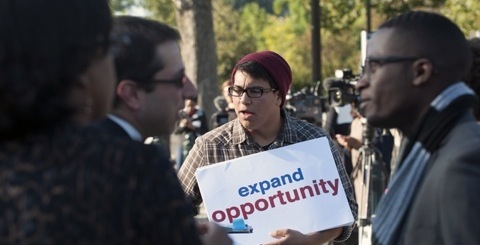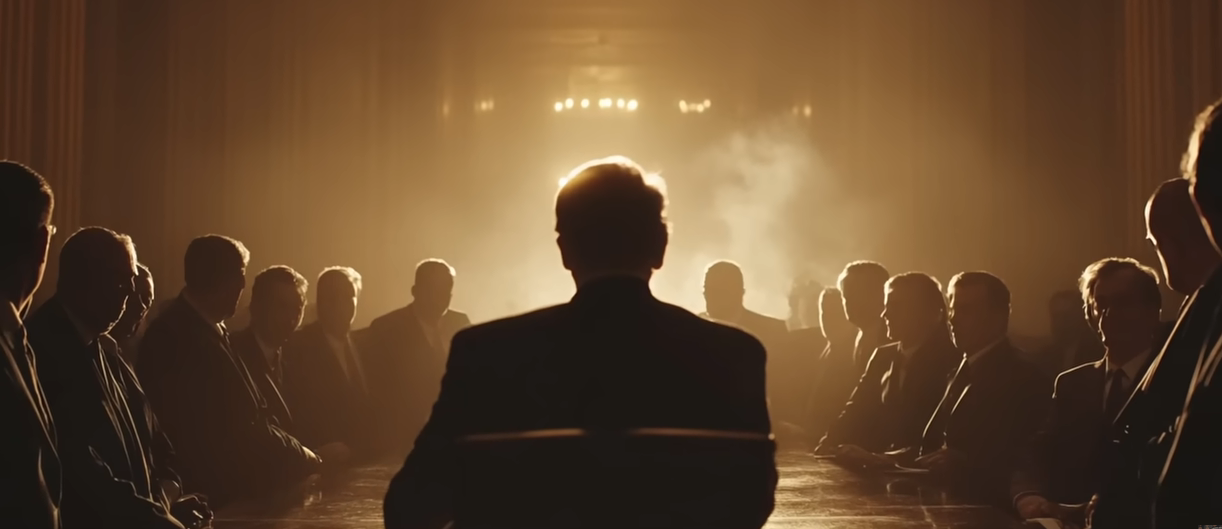[Education And Justice]
The U.S. Court of Appeals for the Fifth Circuit heard oral arguments today in Fisher v. University of Texas, following the Supreme Court’s decision this past June in which it declined to end the University’s race-conscious admissions plan and sent the case back to the lower court for further proceedings.
Josh Civin, Counsel to the Director of Litigation at the NAACP Legal Defense and Educational Fund, Inc. (LDF), presented oral argument on behalf of LDF’s clients the Black Student Alliance at the University of Texas at Austin (BSA) and Black Ex-Students of Texas, Inc. (BEST).
Today’s hearing focused on the extensive record regarding the race-neutral efforts the University of Texas (UT) employed prior to pairing those approaches with a race-conscious admissions component. And a significant portion of the argument also addressed the relevance of UT’s history and experience in developing its policy.
Judge Patrick Higginbotham, who authored a 2010 Court of Appeals opinion that upheld the constitutionality of UT’s admission plan, noted the danger of stereotypes that race-conscious holistic review is designed to address.
Civin’s arguments echoed the points articulated in the supplemental amicus brief LDF submitted on behalf of BSA and BEST, and highlighted the constitutionality and meaningful impact of the University’s admissions policy.
In its June decision in Fisher, the Supreme Court reaffirmed its prior decision in Grutter v. Bollinger, the 2003 University of Michigan affirmative action case, articulating the constitutionally compelling interest in diversity in higher education and the continued use of narrowly-tailored race-conscious admissions policies.
The Supreme Court recognized that a diverse campus brings important benefits, “including enhanced classroom dialogue and the lessening of racial isolation and stereotypes.”
At this stage of the case, the Court of Appeals will decide a narrow constitutional issue—whether the University’s modest use of race in admissions, modeled after the plan the Supreme Court found constitutional in Grutter, is narrowly tailored to the University’s goal of diversity.
As a part of that inquiry, the court will determine if workable, race-neutral alternatives could have promoted the University’s compelling interest in the educational benefits of diversity about as well as its current race-conscious individualized review plan. The results of the UT’s experiment with race-neutral admissions between 1997 and 2004 demonstrate that the answer is no.
Even with the enactment of the Top Ten Percent Plan and UT Austin’s implementation of other race-neutral options, African-American students never exceeded 4.5% of the entering class—far below the 13% of Texas high school graduates who are African Americans. And during that period, 79% of classes at UT Austin had zero, or only one, African-American student. This type of data, and the experiences of LDF’s clients BSA and BEST, who are current and former UT students, show that although the University of Texas has made great progress in overcoming its legacy of exclusion, it still has far to go in order to fully achieve the benefits of diversity.
There has been a vast outpouring of support for the University’s efforts to build a racially diverse campus, by taking race into consideration in a modest fashion. In addition to a multi-racial coalition of current UT students and alumni, support has come from major corporations, former military leaders, over 100 colleges and universities, religious organizations, labor unions, and other civil rights advocates.








